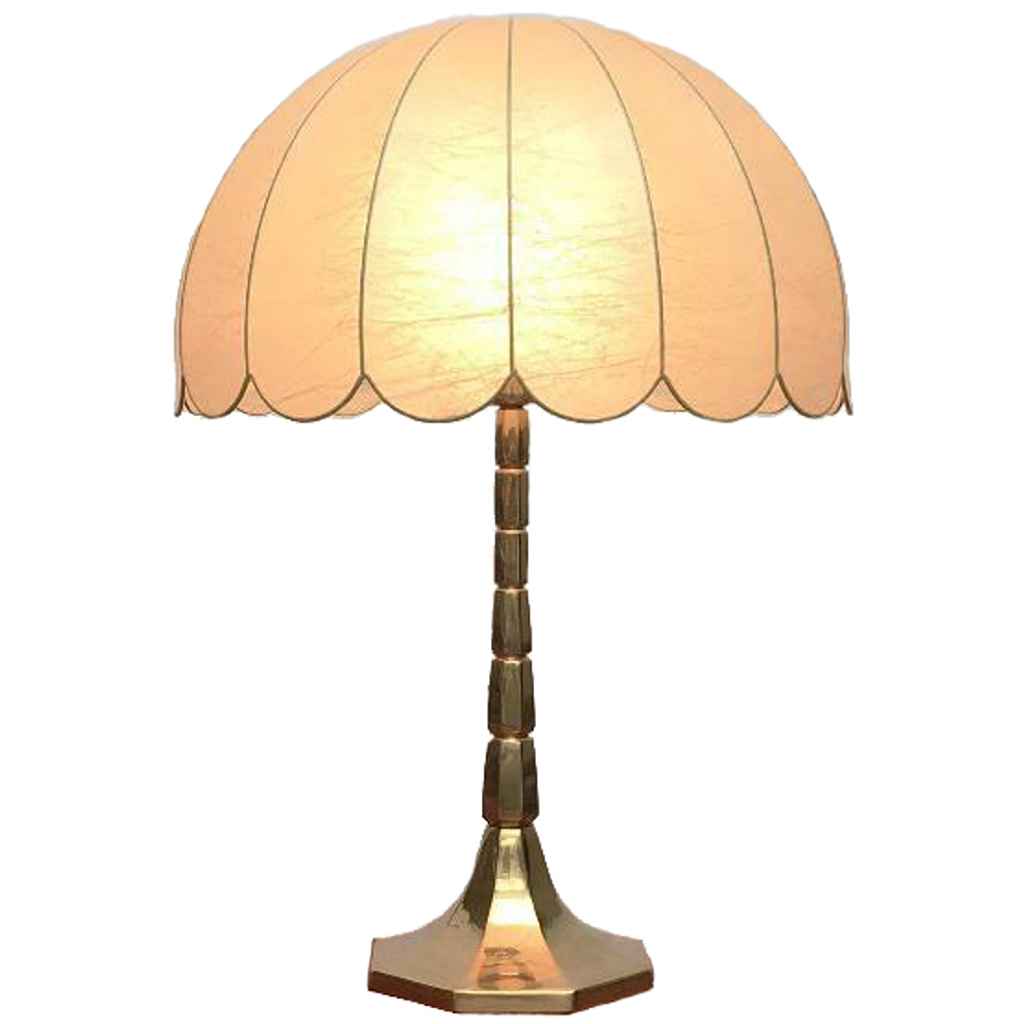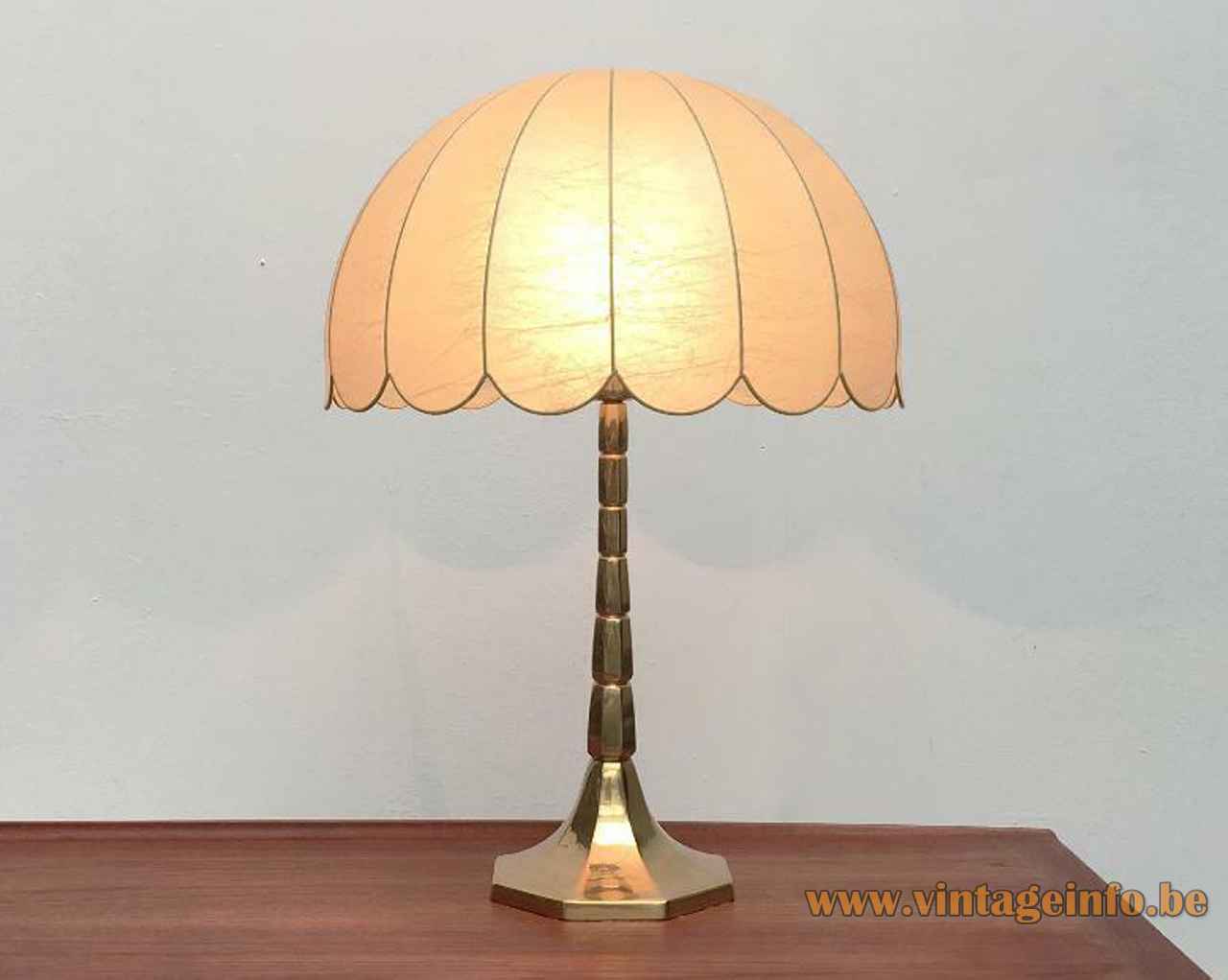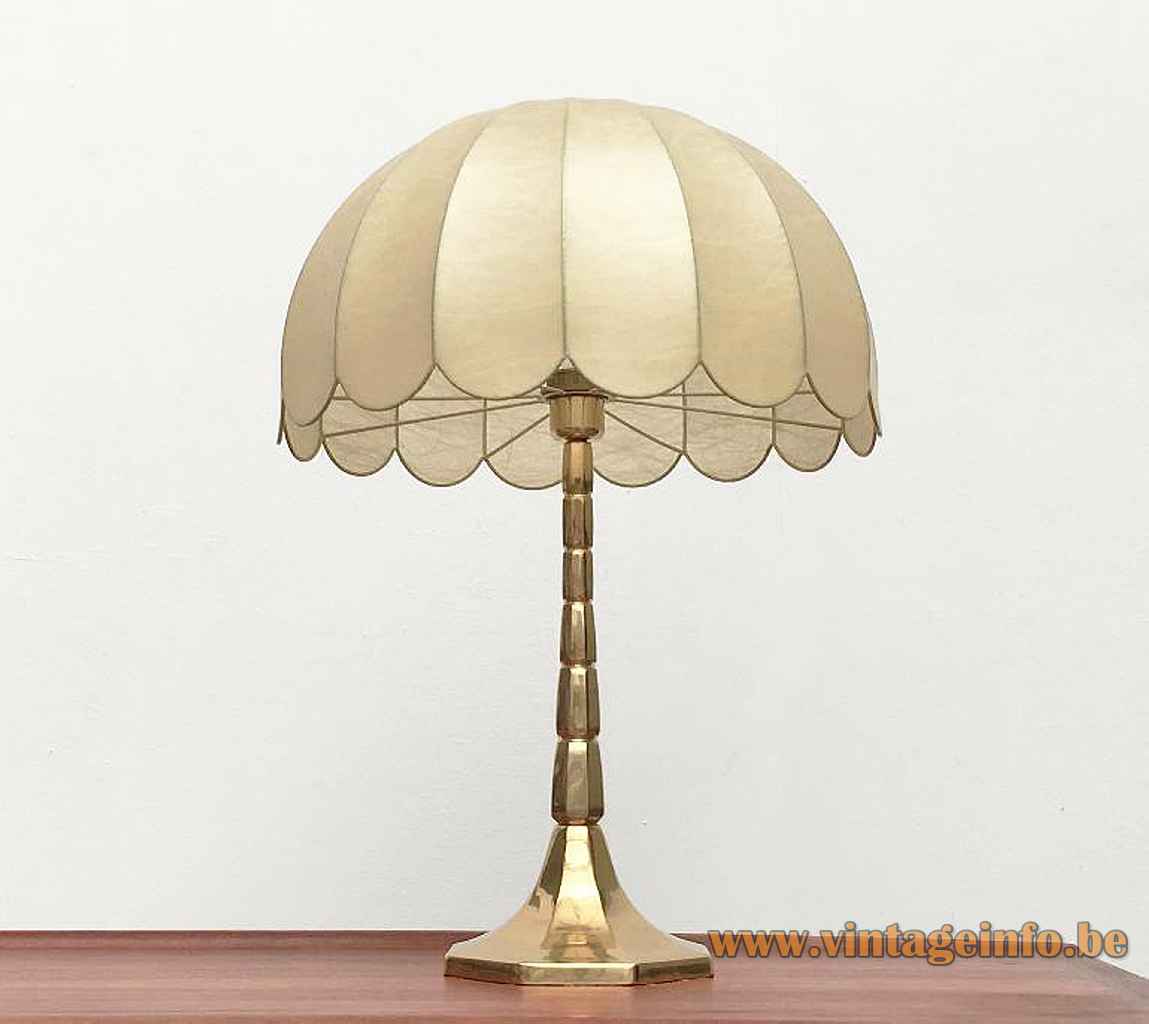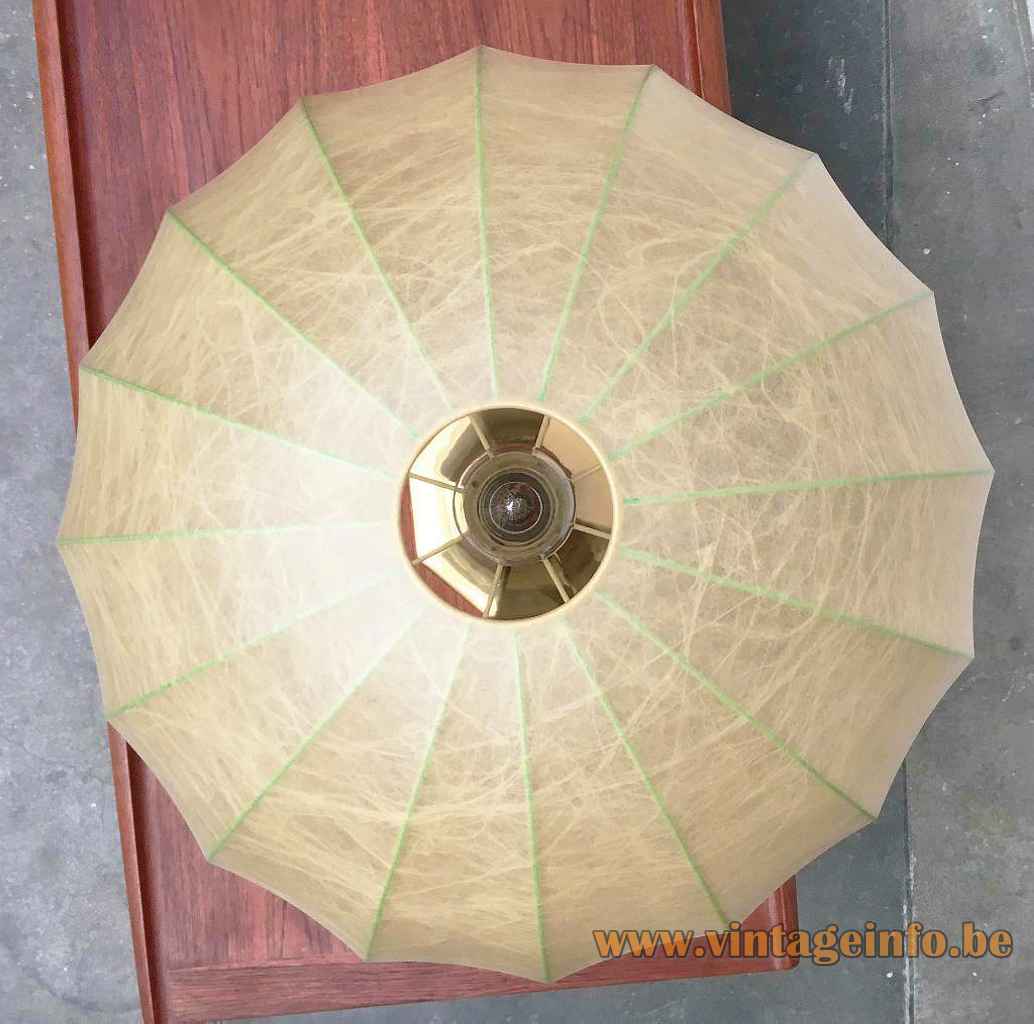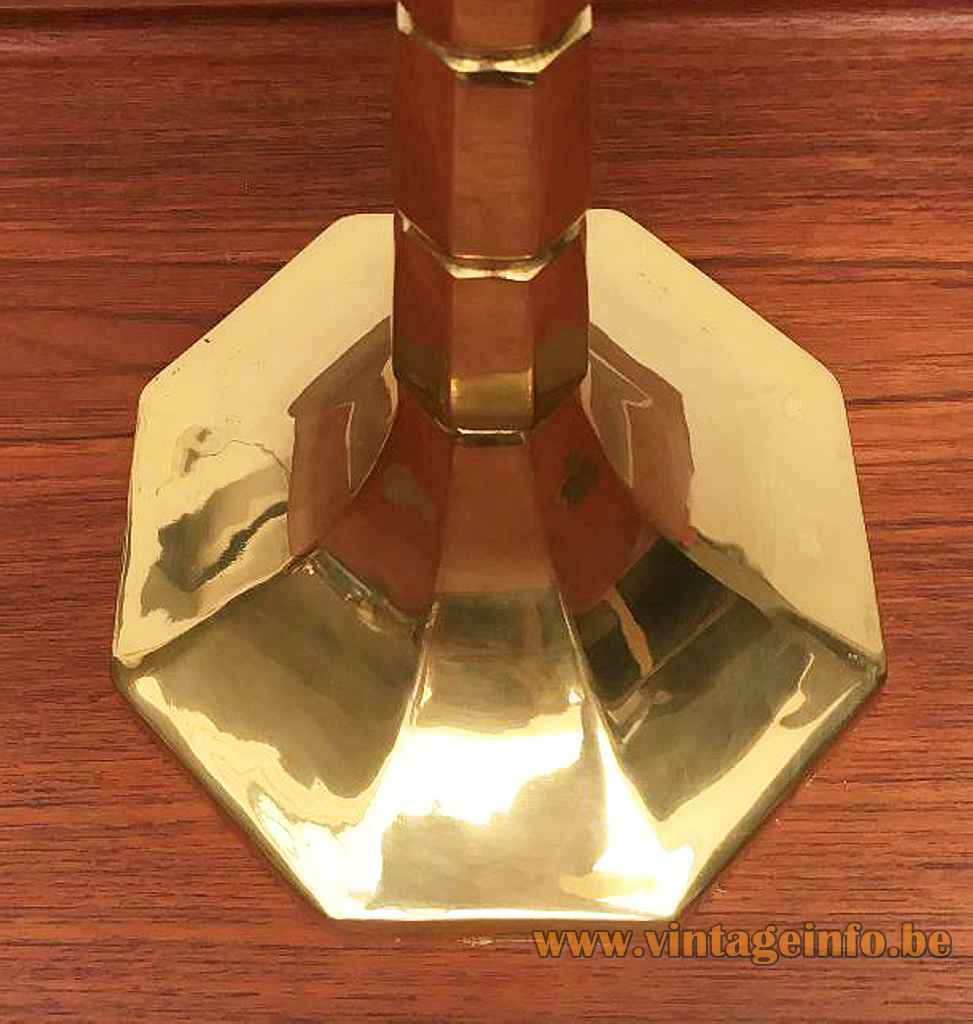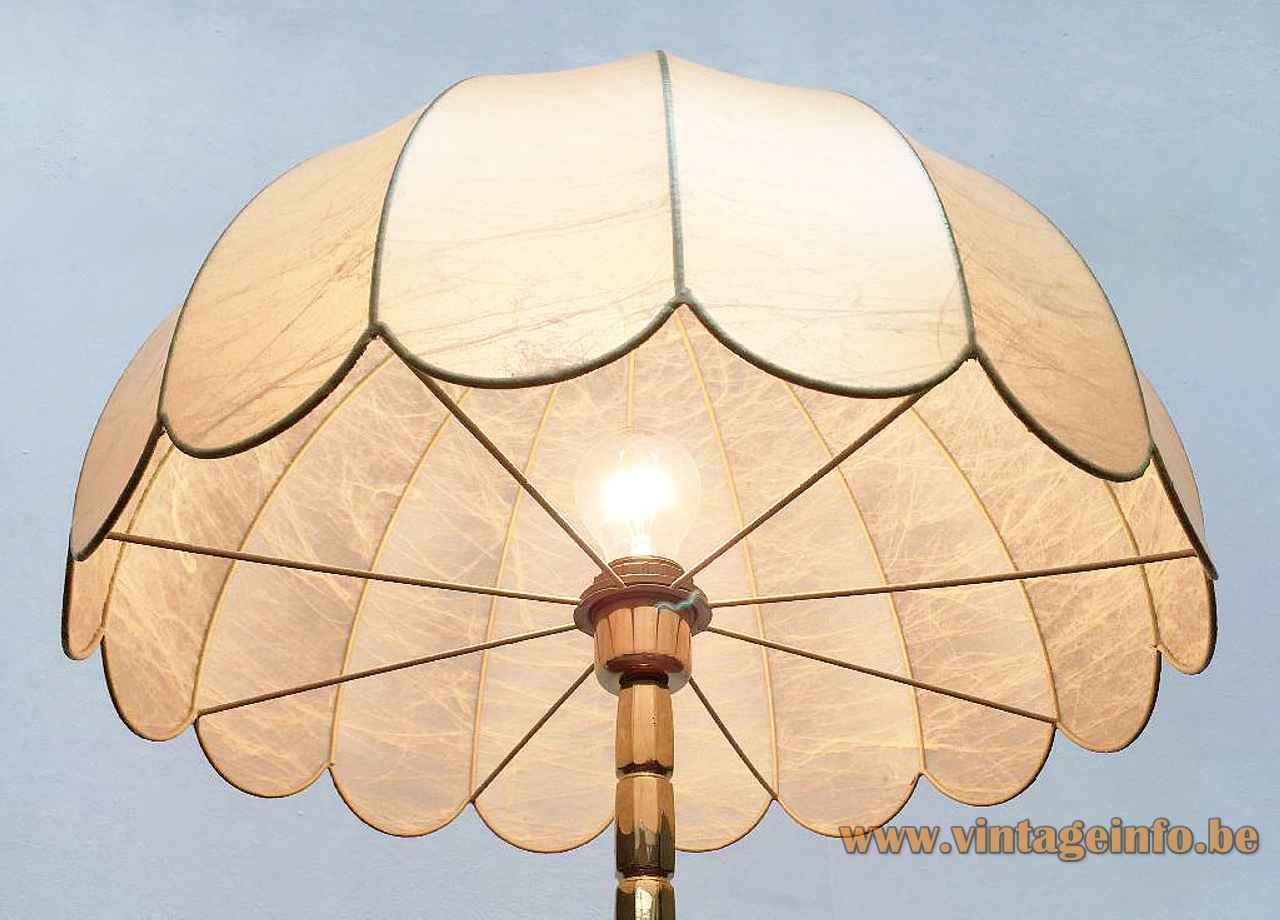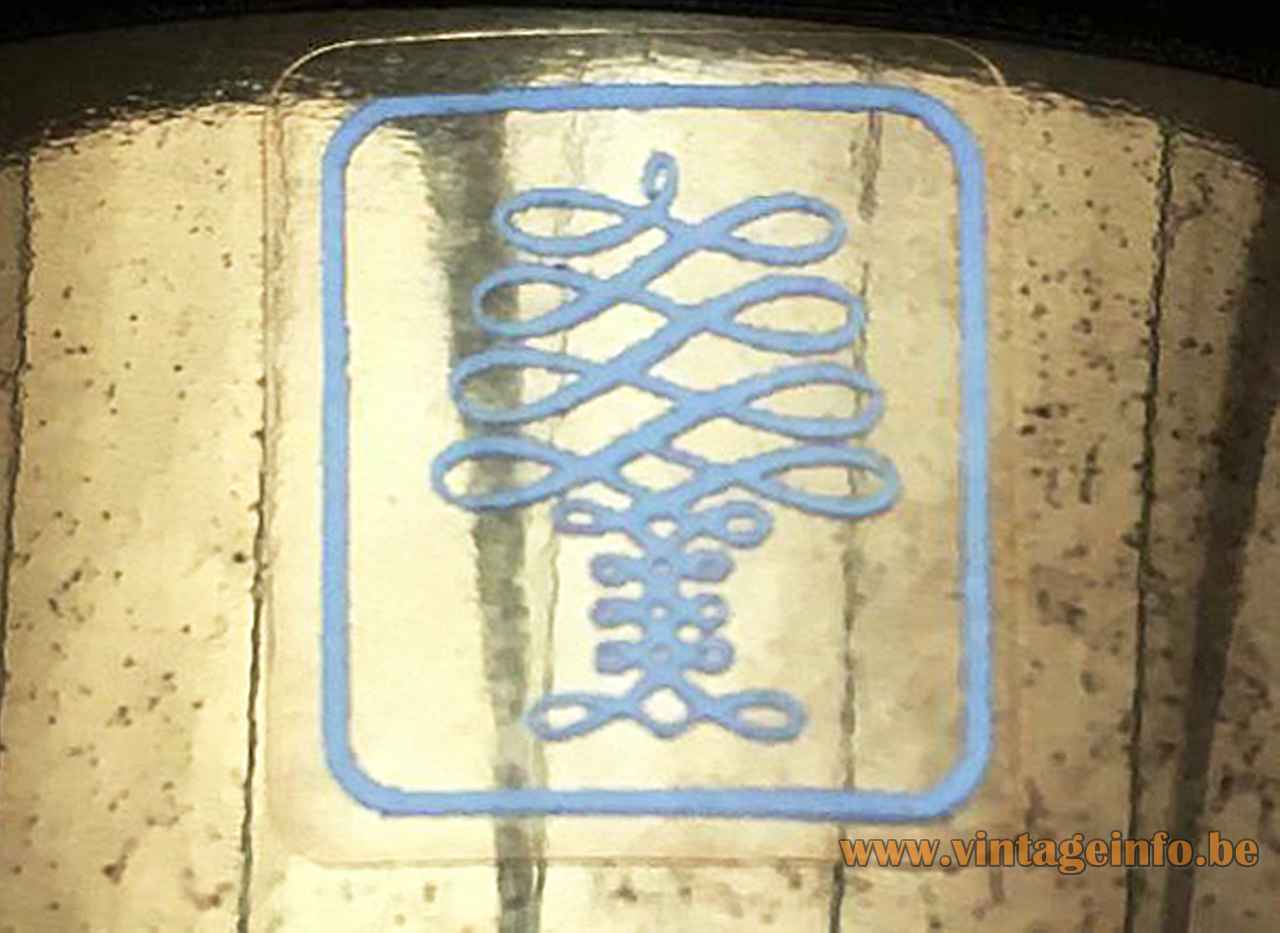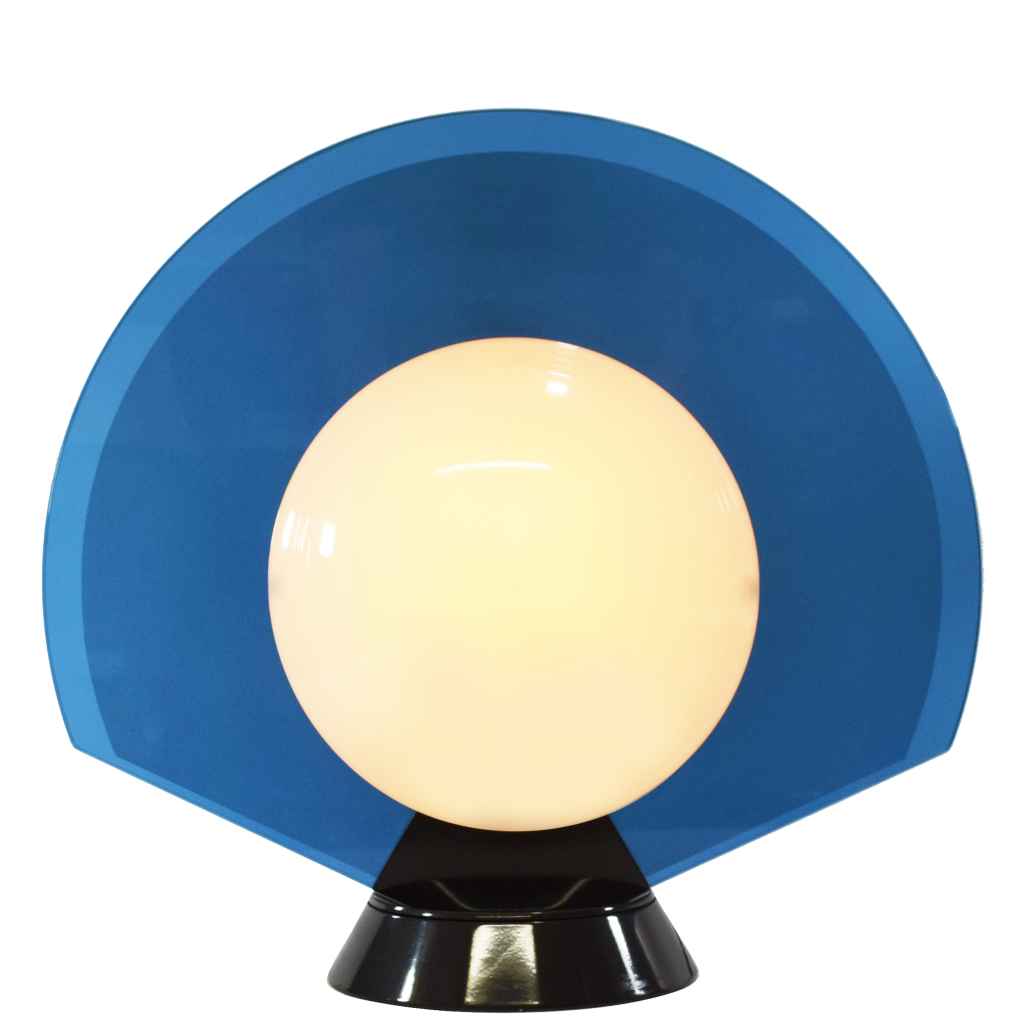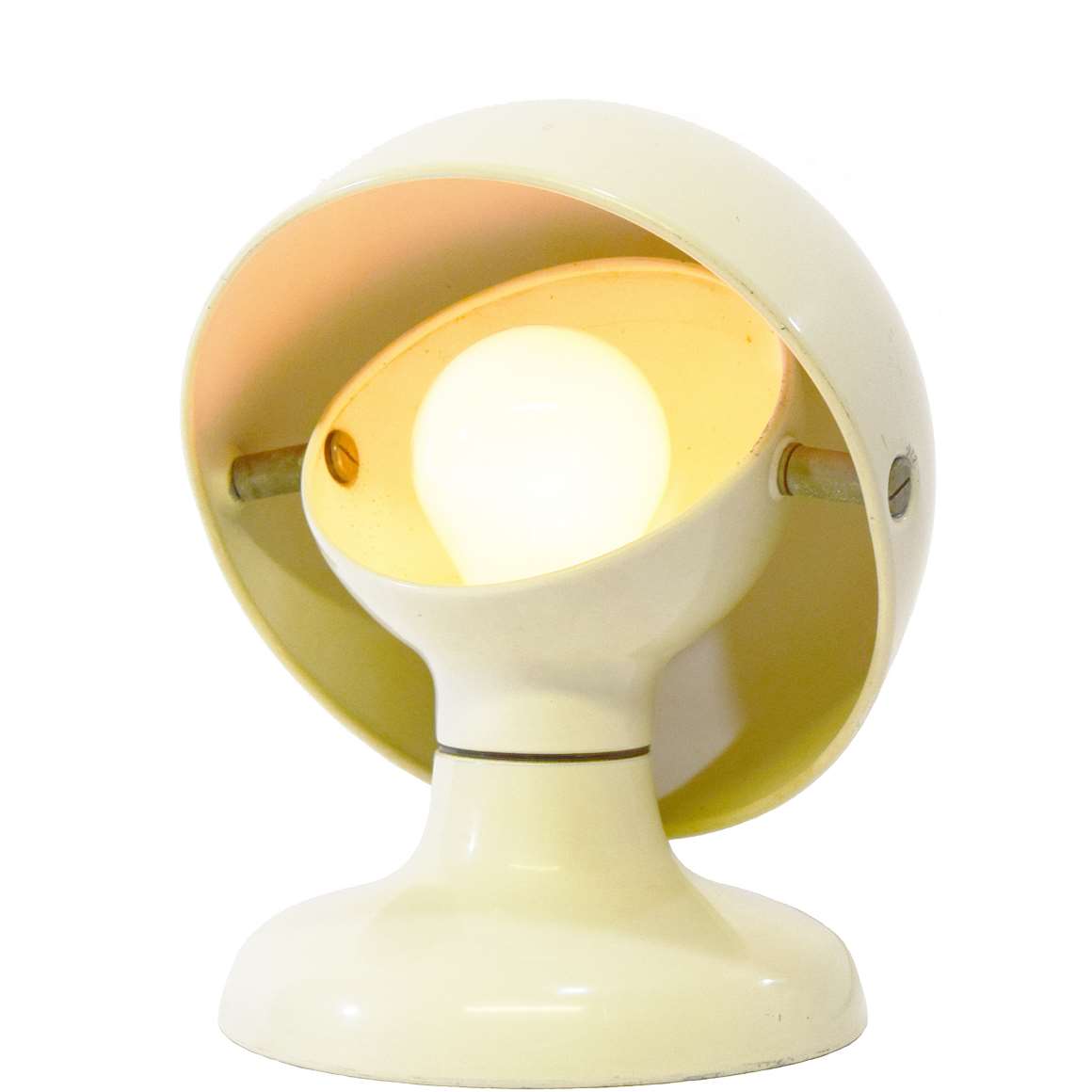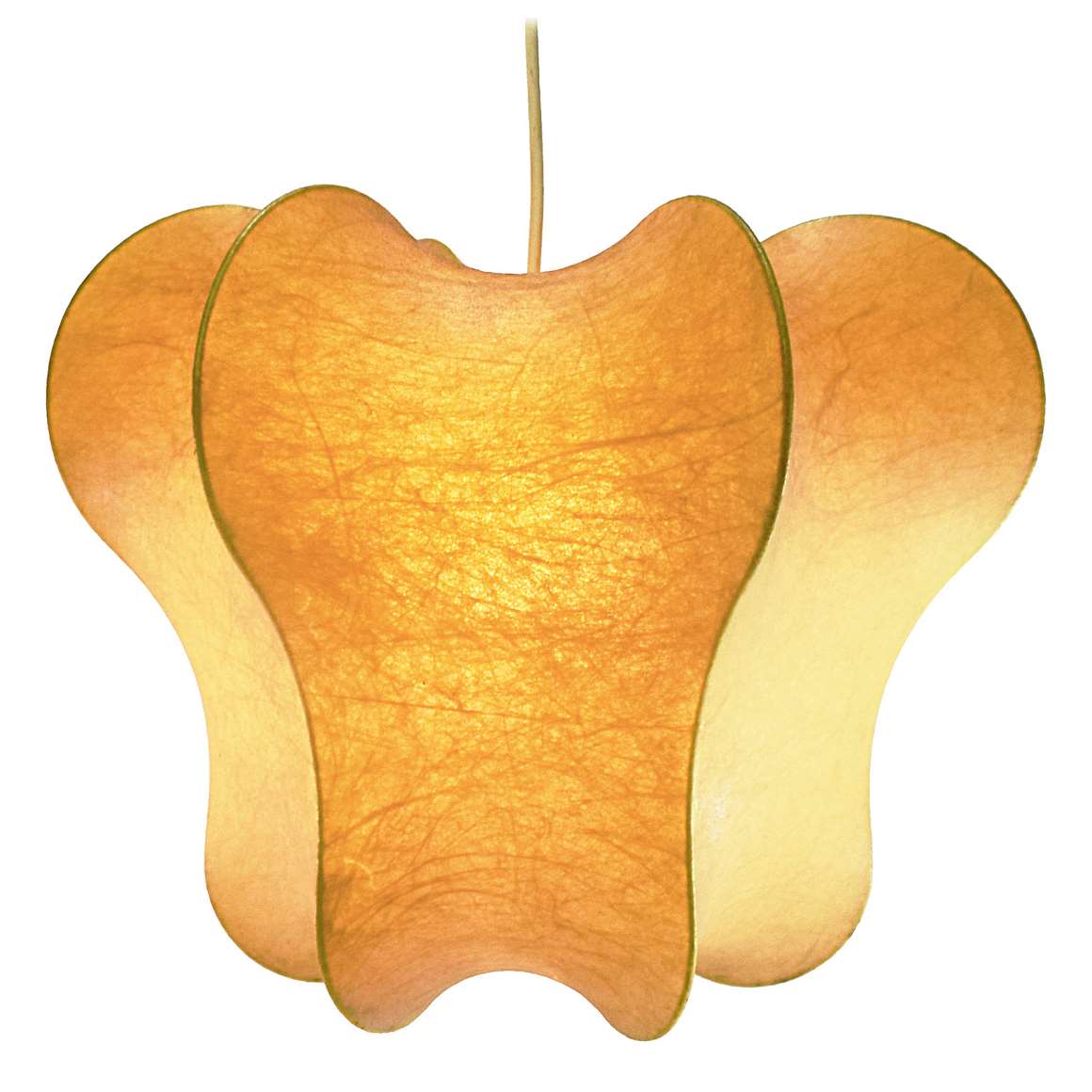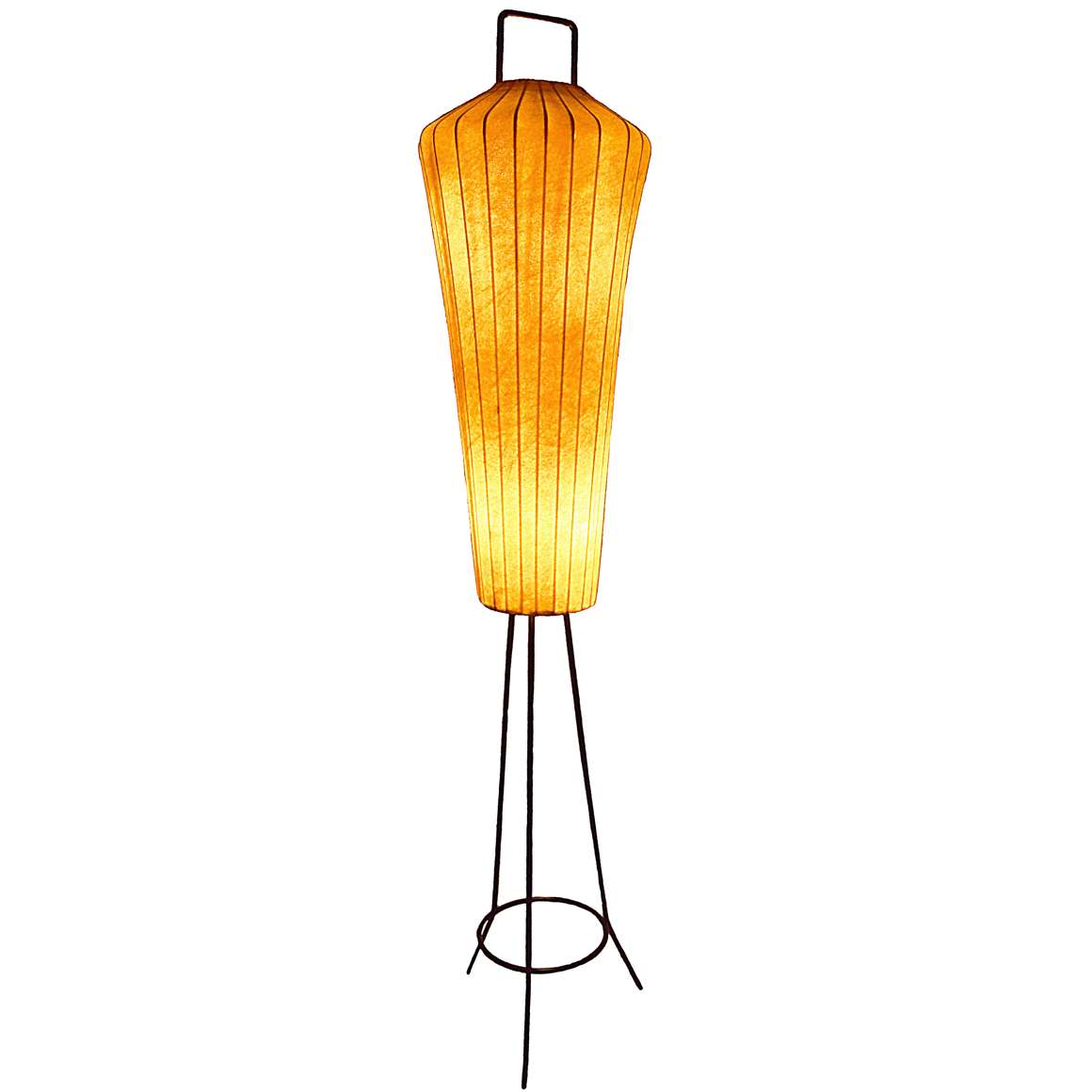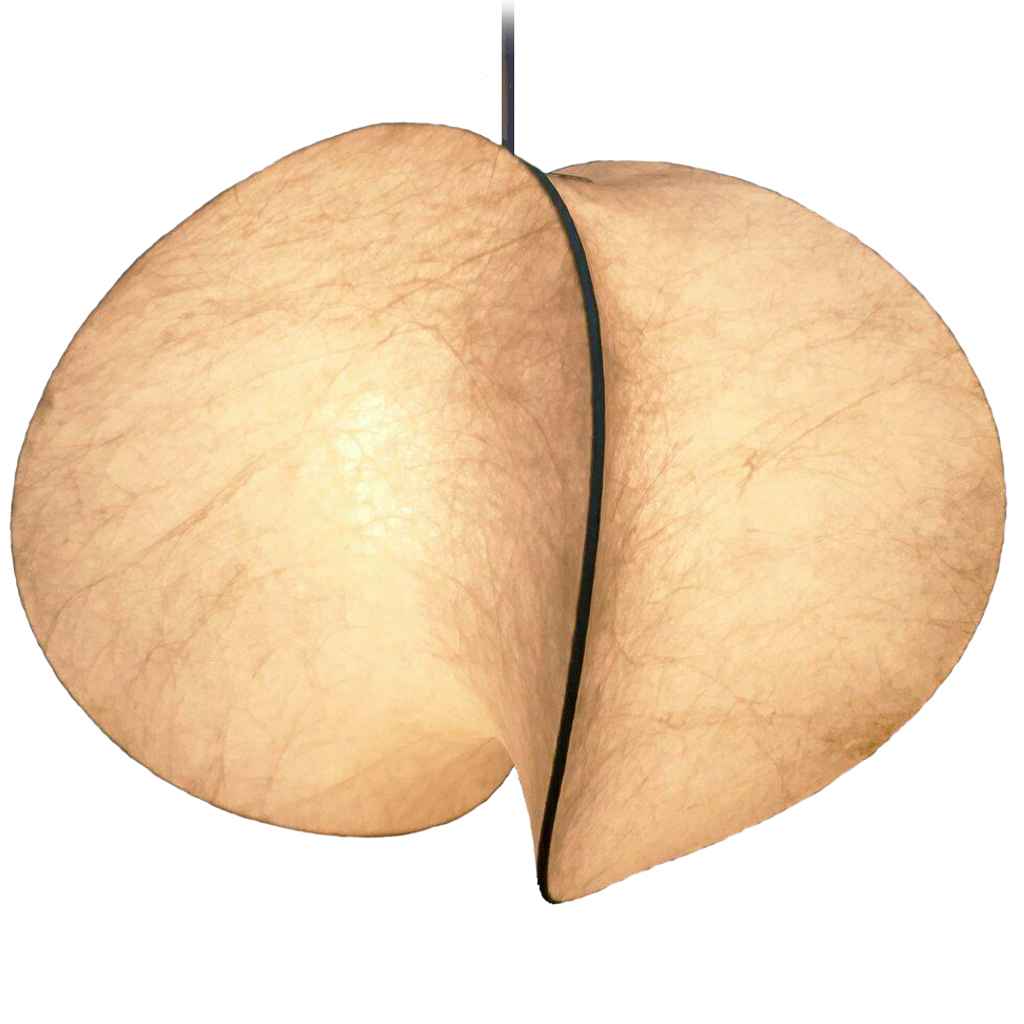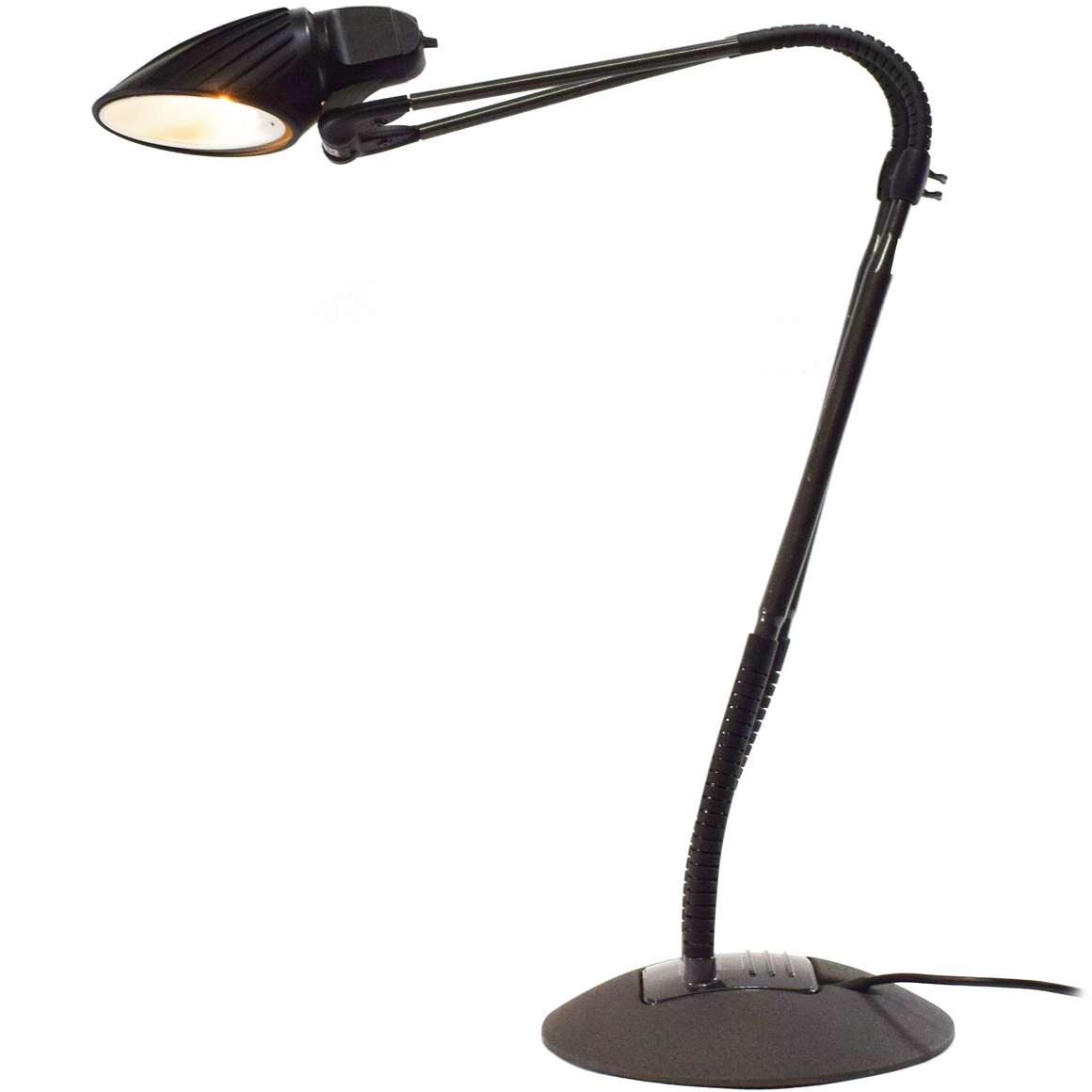How these lamps are made by Eisenkeil for FLOS
Many thanks to Frank from nullviernull raum+kommunikation for the pictures. You can find his shop over here on Pamono.
Goldkant Leuchten Cocoon Table Lamp
Materials: Hexagonal cast brass base & palm tree style rod. Umbrella/parasol style lampshade made of plastic “Cocoon” sprayed on a metal wire frame. Bakelite E27 socket.
Height: 67 cm / 26.37”
Width: ∅ 47 cm / 18.50”
Base: ∅ 20 cm / 7.87”
Electricity: 1bulbE27, 1 x 75 watt maximum, 110/220 volt.
Any type of light bulb can be used, not a specific one preferred.
Period: 1970s, 1980s – Mid-Century Modern.
Designer: To be appraised.
Manufacturer: Goldkant-Leuchten Fritz Wauer GmbH & Co. KG, Dieselstraße 30, 5600 Wuppertal, Germany.
Other versions: This Goldkant Leuchten Cocoon table lamp exists in all probability in several variations.
Many people think that these lamps are made of pig’s bladder, it is not, of course.
Goldkant Leuchten
The company was founded right after World War II in 1946. The first name of the company was Cocoon-Leuchten International. Goldkant Leuchten also produced ceramic lamps. Designers of Cocoon lamps: Shultz, Baum. The company ended business in 1994.
Many lamps you find in this material with a label from other companies such as Aro Leuchte, Josef Brümberg and Raak, to name a few, were all made by Goldkant Leuchten.
Fritz “Friedel” Wauer who is credited by FLOS for devising the technology of spraying the material onto iron frames, was inspired by the “self-wrapping” of a silk worm, hence the naming “cocoon”.
However, the first one who used this kind of material is George Nelson in 1947 for his Bubble Hanging Lamps. The technique had been developed for mothballing naval ships. George Nelson referred to these lamps as “one of those happy accidents which occur all too infrequently in the designer’s experience”.
In the late 50s Arturo Eisenkeil from Merano, today in Marling, brought the technique to Italy and together with Dino Gavina, Achille and Pier Giacomo Castiglioni, Sergio Biliotti, Carlo and Tobia Scarpa, Ignazio Gardella, to name the most important designers, the FLOS company was born.
VLM Components
All the electric parts are made by VLM Components from Buccinasco near Milan since 1968. The company became famous for the switches they produce since 1968, designed by Achille Castiglioni. You can find them over here.
VLM is part of the Relco Group, founded in 1967. Today they are the owners of the brands Relco, Leuci, Relco Lighting, VLM and Segno.
In 1974 Goldkant Leuchten received 2iF design awards for Cocoon lamps.
One for the Orsa pendant lamp and one for the Ulvsunda.
Links (external links open in a new window)
Emerging from a Cocoon: The Story Behind the Beginning of FLOS
Vintageinfo
Other Cocoon lamps
Artimeta Lugano tripod cocoon floor lamp
